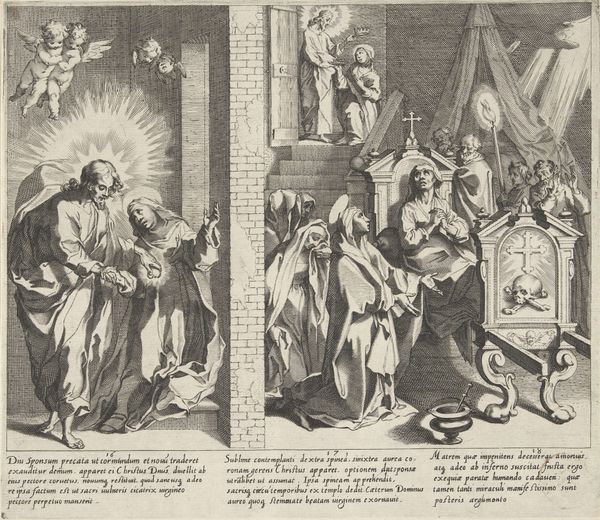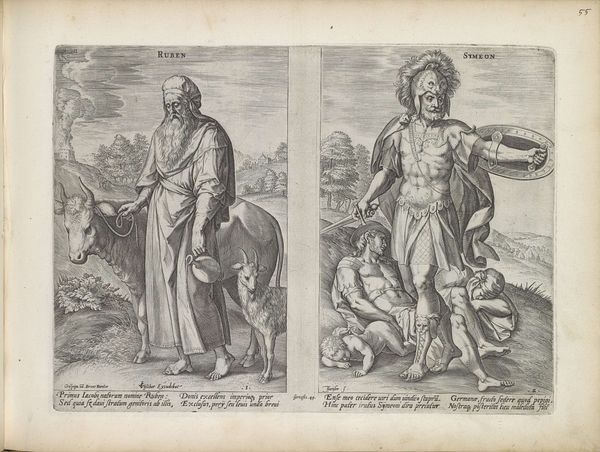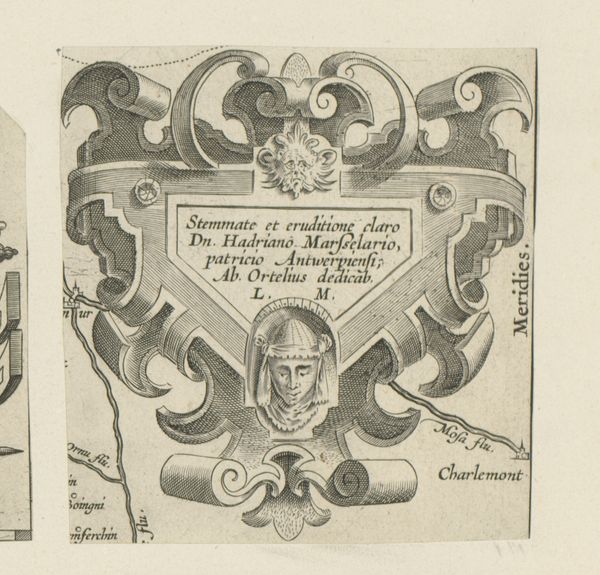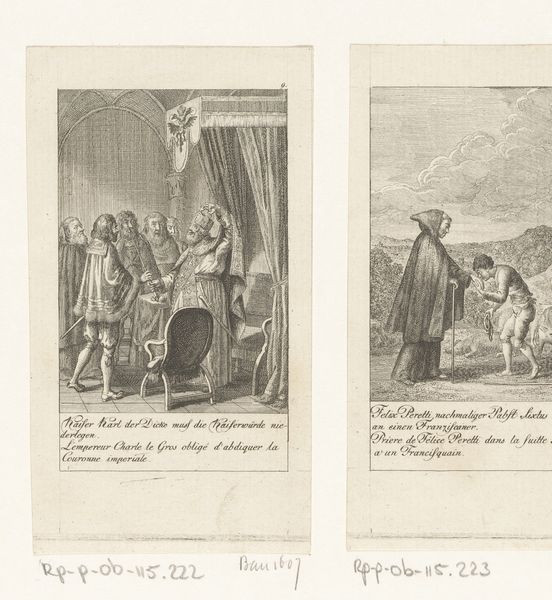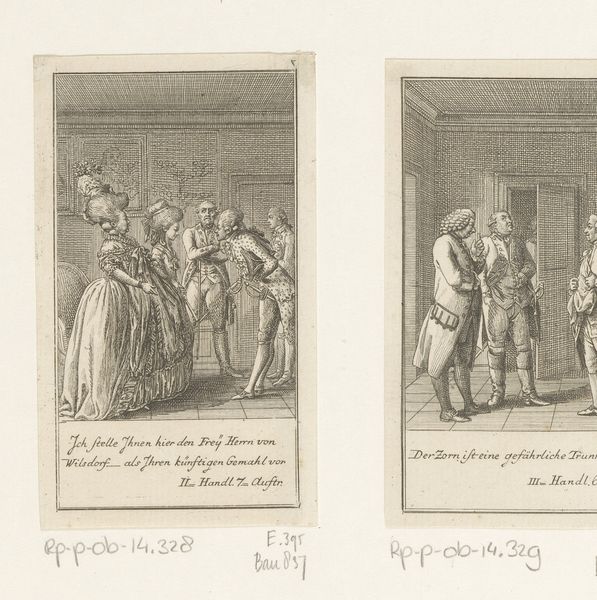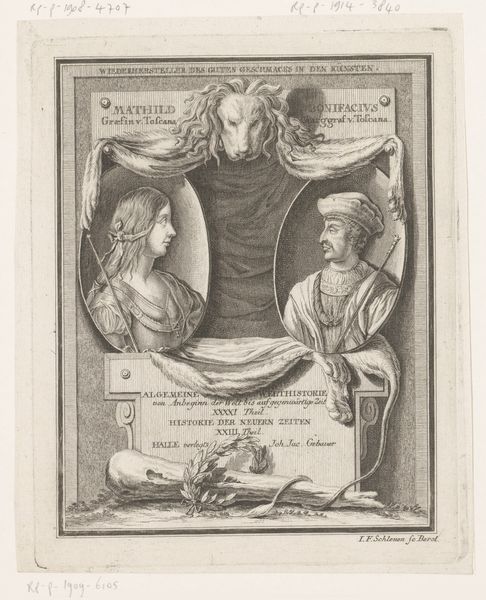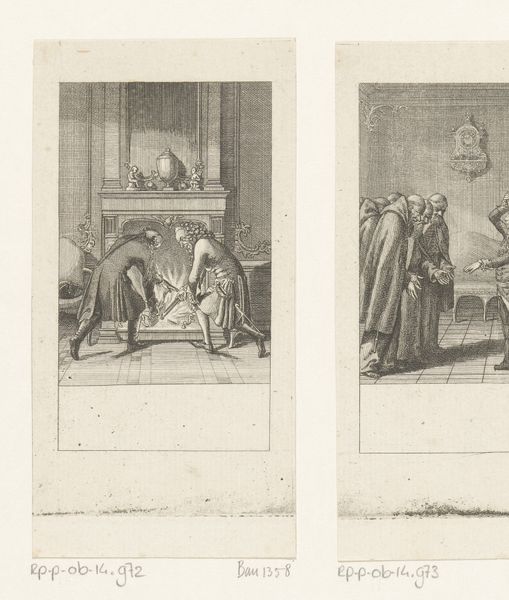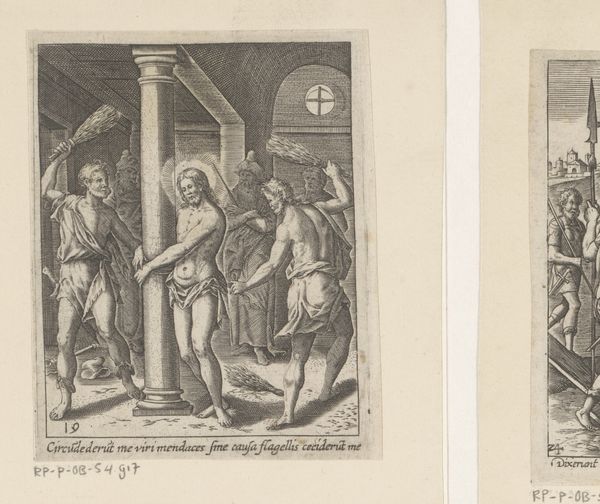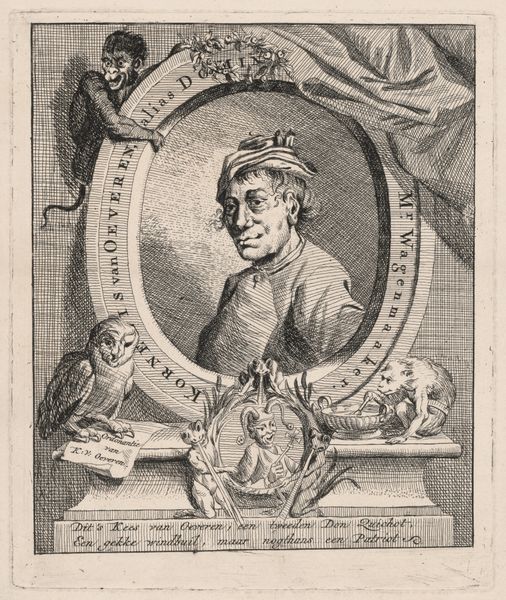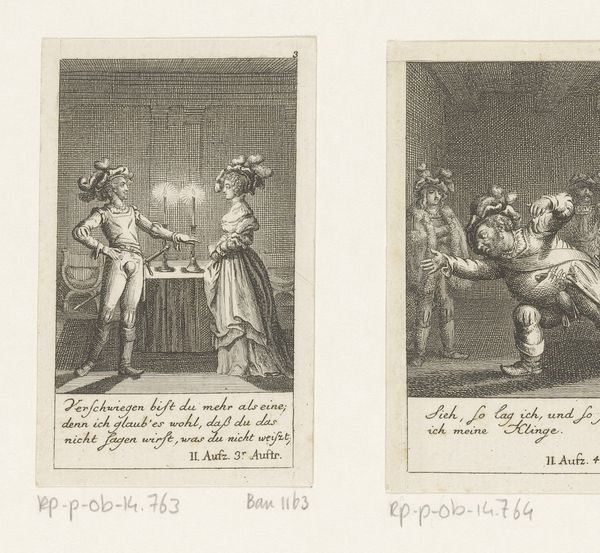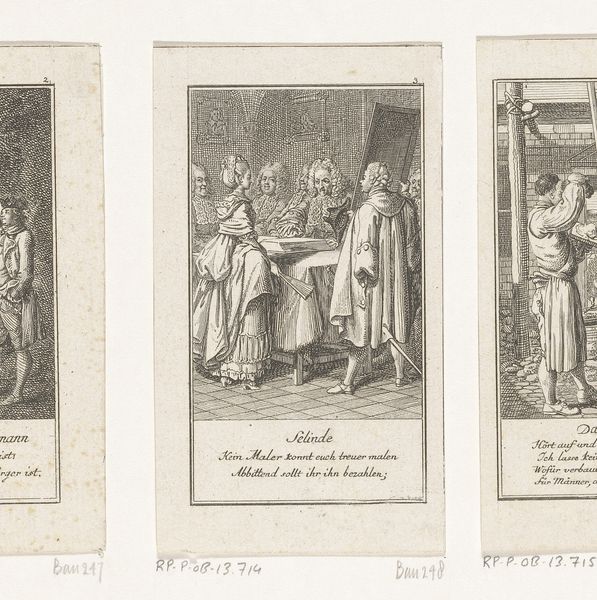
print, engraving
#
portrait
#
pencil drawn
#
aged paper
#
toned paper
#
light pencil work
#
baroque
# print
#
pencil sketch
#
old engraving style
#
figuration
#
personal sketchbook
#
pen-ink sketch
#
line
#
sketchbook drawing
#
genre-painting
#
sketchbook art
#
engraving
Dimensions: height 96 mm, width 146 mm
Copyright: Rijks Museum: Open Domain
This engraving, made by Crispijn van de Passe the Younger, depicts a nobleman from Venice and his wife Leonella. The process of engraving itself is crucial to understanding this artwork. It is a printing technique, allowing images to be reproduced and disseminated widely. Engraving involves meticulously incising lines into a metal plate, which are then filled with ink and transferred onto paper. The resulting print captures the fine details and textures achieved through this laborious process. This mode of production speaks directly to social issues of labor, class, and consumption. Prints like this one were often made for a rising middle class eager to emulate the lifestyles of the wealthy. The artwork embodies a commercial transaction: the nobleman and his wife become commodities, available for purchase and consumption by a voyeuristic public. By recognizing the material reality of the engraving, we can better appreciate how it functions as both an artistic creation and a reflection of its time.
Comments
No comments
Be the first to comment and join the conversation on the ultimate creative platform.



